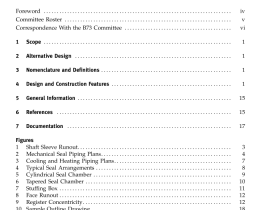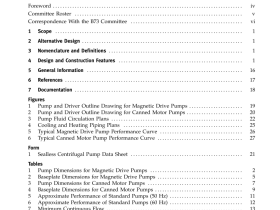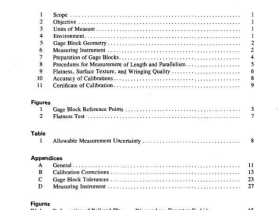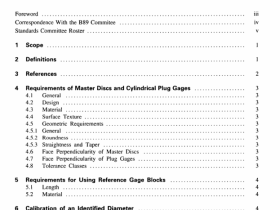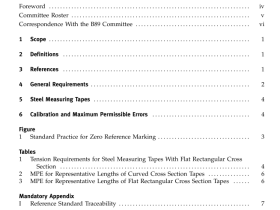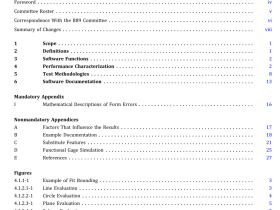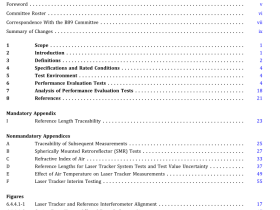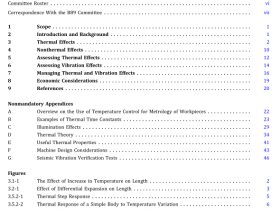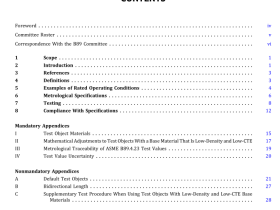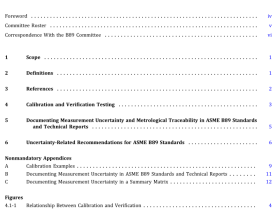ASME B1.25 pdf download
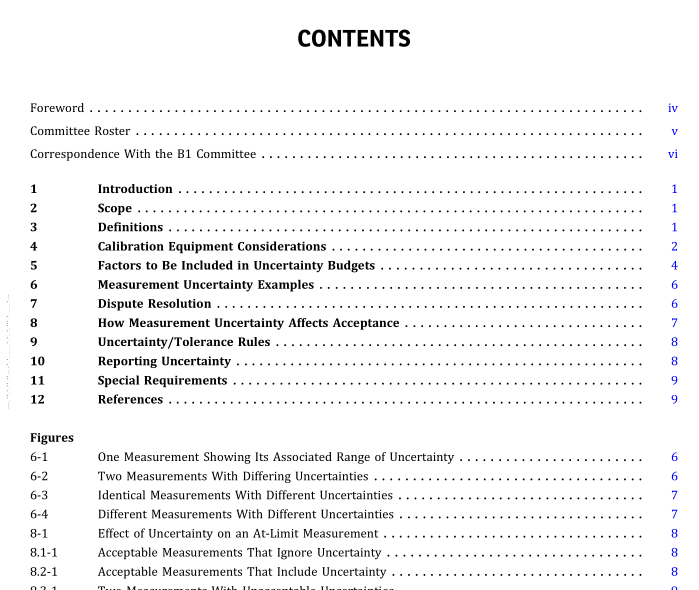
ASME B1.25 pdf download Measurement Uncertainty Factors in the Calibration of Screw Thread Gages
I INTRODUCTION
Every measurement contains an element ofuncertaintywith respect to the values obtained compared to the truevalue of the measured feature. This Standard has beenprepared as a guide to the factors that contribute to uncertainty in the calibration of screw thread gaging devices.The reference section at the end ofthis Standard provides
sources on how to compute uncertainty values.This Standard is intended to provide the following:(a) an explanation ofmeasurementuncertaintyand thefactors that contribute to it(b) characteristics of the equipment required forthread gage calibration
(c) guldance in the application of measurement
uncertainty
(d) methods to resolve measurement disputes
NOTE: The metric values shown in parentheses are not conver-sions. They represent the closest typical metric values for theinch values shown.
2 SCOPE
(a) This Standard notes technical factors that canexplain measurement differences between two partiescalibrating the same gage. It is directed to the metrologyinvolved,not acceptance rules or other qualityconsiderations.
(b) While measurement uncertainty applies to the cali-bration of gages to any standard,this Standard focuses ongages made to ASME standards only. The calibration ofgages necessitates a thorough understanding of the standards they were made to because the standards ofteninclude required conditions for and corrections to thecalibration.
(c) Users of this Standard should be aware that while anumber of elements for each gage type are listed, independent calibration laboratories may not include themall in their reports, Agreement should be reached withoutside calibration providers as to what elements areincluded in their various levels of calibration.
3 DEFINITIONS
31 General Definitions
measurement uncertainty: the amount that a measurement of size may differ from the true value of thatfeature. Every measurement contains an element ofuncertainty expressed as plus or minus from the reading ofa sizeobtainedUncertainty values determined by this Standard indicate the true measurement is included within theuncertaintyband with 95% confidence. With an expansionof the uncertainty value, the confidence of the truemeasurement being included could be raised to 99%It is important to understand that there is no genericuncertainty for a given process. Two laboratories havingidentical principal equipment will have different uncertainties due to variations in the factors noted insection 5.
Often several laboratories report the same or similarvalues for uncertainty due to rounding of the actualvalues to the nearest convenient value. For example.12 uin maybe rounded to 15 winin a conservative budgetuncertainty budqet: a listing ofall ofthe factors affecting aparticular measurement and the mathematical methodused to process each one to arrive at a total expandeduncertainty.Each factor is processed to show itscommon dimensional effect even though it may not beof dimensional origins, such as temperature or measure-ment force. Also called uncertainty statement.
32 Dimensional Calibration Definitions
The following terminology is commonly used in dimen-sional calibration; however, some terms may refer tothread gages and related devices only:
accuracy: an indication of the performance of an instrument, the dimensional state ofa master, or the outcome ola process when compared to specified values. Per JCGM200:2012,”accuracy” is not a quantity and is not given anumerical quantity value.
comparison: a dimensional measurement process inwhich the unknown size of a gage is compared tothe known size of a master, such as a gage-blockbuild-up. Some instruments, usually referred to ascomparators, are designed for this type of short-range measurement only. Other devices with a longmeasurement range may be set up in a similarmanner for improved precision. The performance ofall devices used in this manner is limited by the uncer-tainty in the calibration of the dimensional master(s)used.
cosine error: an error that results when the feature beingmeasured, such as a diameter, is not normal (square) tothe axis of measurement, This error may be encounteredwhen plug gages rest on a worktable that cannot beadjusted to offset it. It may also appear in the directmeasurement of solid thread ring gages. In both cases,it occurs because either the face or table the gage is
